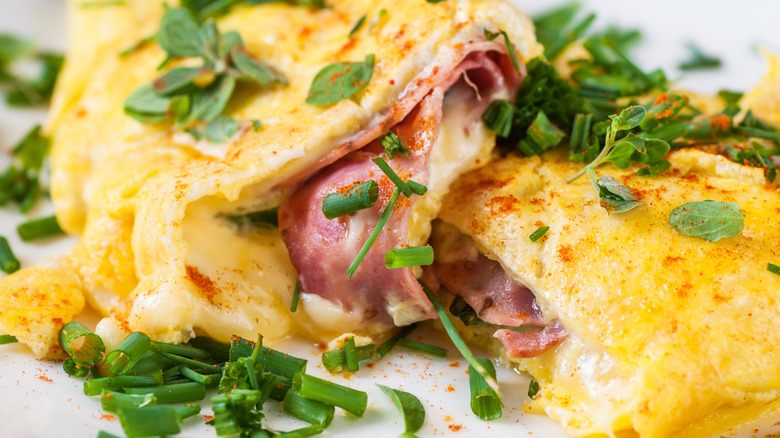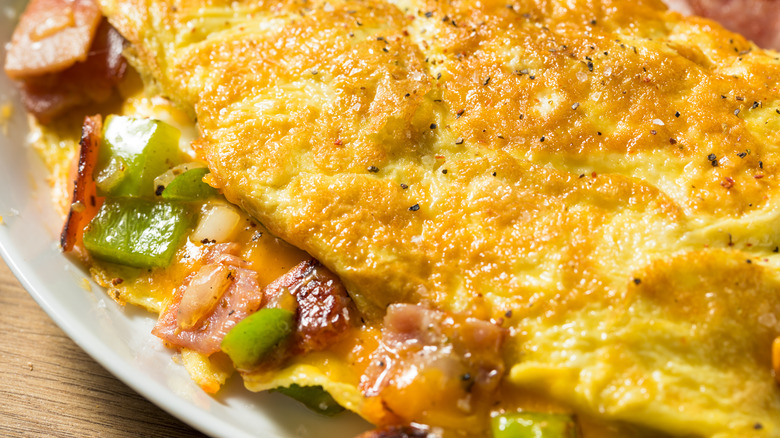They Key To Perfectly Melted Cheese In Your Omelette
According to Jacques Pépin, the omelette is the sign of a well-trained chef. While intimidating at first, once perfected the omelette is a beautiful way to start any morning. Pépin says that the style of omelette most frequently found in the U.S. is similar to a French country omelette — but the curds of the eggs are larger and more well-cooked. According to Chef's Vision, the larger curds in the American omelette help to make the omelet thicker, bigger (like all things American), and better-suited for heavy and dense fillings, which is also what makes the omelette such a delectable template for delicious toppings.
If you want, you can keep it simple and easy, make it into the classic Denver Omelette, or go crazy and spice it up with some Taiwanese oysters. Whatever fillings you choose though, one key to any good omelette is to make sure that the fillings are properly prepared, and that your preferred cheese is nice and melty. There's nothing worse than a veggie omelette that's full of undercooked vegetables and topped with cold shredded cheese. You deserve better — your omelettes deserve better.
Pre-cooking your filling helps melt cheeses
Luckily, the solution to both of these problems are one in the same. According to Serious Eats, one of the best ways to ensure that your cheese is properly melted is to add your freshly-cooked fillings right on top. For a Denver omelette for example, consider frying up the ham, peppers, and onions in a separate pan just before adding them to your pre-cheesed omelette. Then, once you fold the omelette closed, that residual heat will be trapped inside and help melt all of your cheese.
Serious Eats also recommends going a step further by mixing the cheese directly into the other filling ingredients before they ever reach the omelette to prevent overcooking the eggs.
According to Swasthi's Recipes, the type of cheese being used is also important. It says that if you're looking for the gooiest, stringiest cheese in your omelette, it is best to go with options like cheddar, mozzarella, and Gruyère. Other cheese like paneer or halloumi that don't melt as well can still be added, but they'll be more of a chewy filling than a well-melted inner lining to your omelette.

